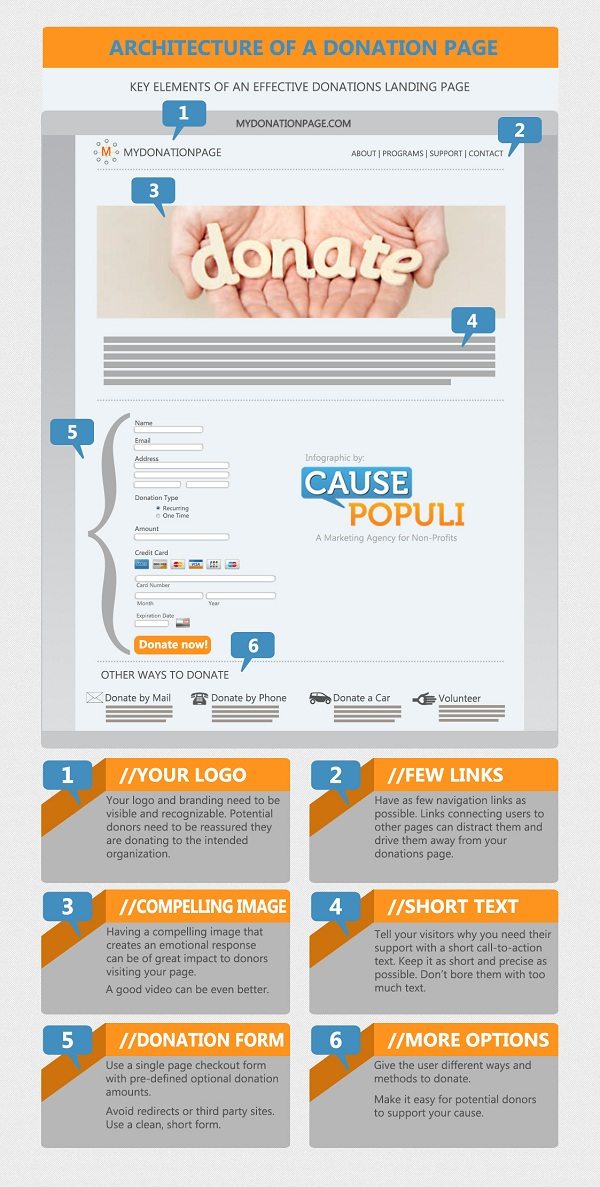
February 1, 2013; Source: Cause Populi
Cause Populi has released an infographic depicting what it considers to be the six key elements of an effective online donation page:

Hopefully, most of these elements are already included on your nonprofit’s donation page. Some are obvious, but ensuring that you include captivating images and additional ways to give are two perhaps less-obvious components that are now essential on giving pages. NPQ surveyed a number of nonprofit organizations’ donation pages for good examples of these key elements in action, as well as some other smart strategies that you might consider for enticing donations:
Sign up for our free newsletters
Subscribe to NPQ's newsletters to have our top stories delivered directly to your inbox.
By signing up, you agree to our privacy policy and terms of use, and to receive messages from NPQ and our partners.
Save the Children: This donation page provides tangible gifts linked to donations, compelling images, and a red button that stands out on the organization’s homepage.
ASPCA: When trying to draw donors in, sentimental images of kittens couldn’t hurt. This donation page includes a link to see how your donations will directly impact the animals the ASPCA is serving.
Doctors Without Borders: Among the features on this impressive donation page are many different options on how to give and a visual pie chart of where donors’ money is going within the organization.
Housing Works: The incorporation of a video that tells the story of the organization’s services is a nice touch. With powerful auto-visual cues, the donation page explains how supporters are truly making a difference.
Keep a Child Alive: This black and red design is eye-catching and draws the prospective giver in. In addition, the seamless integration of an easy mobile giving option via text message seems likely to evoke some quick contributions.
Are you using innovative and/or compelling elements on your organization’s donation page? What are some of the best donation pages that you have seen? What elements do you consider to be the most important? –Aine Creedon













